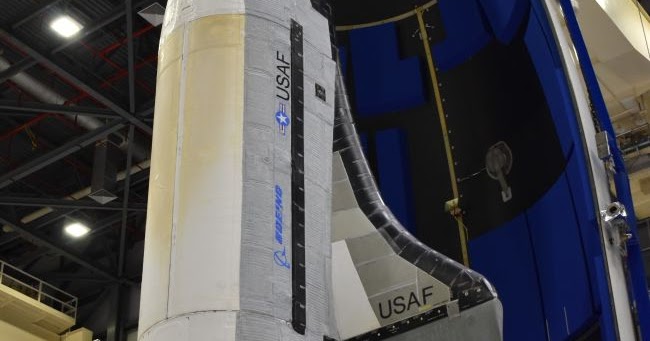seruriermarshal
ACCESS: Top Secret
- Joined
- 4 May 2008
- Messages
- 1,180
- Reaction score
- 574
100 yearsWonder how long the X-37B will remain in space this time?
100 yearsWonder how long the X-37B will remain in space this time?
100 yearsWonder how long the X-37B will remain in space this time?

If you beamed enough energy to a drone to replace a turbine engine you'd just torch the drone.Space based persistent ISR is old hat.
Will beam powered electrical aircraft stack finally break the turbine mafia~
Elon Musk had a good rant about it several years ago. Basically really inefficient.While the economics of space-based solar power as envisaged by Gerard O'Neill are uncertain at best, I've often thought that the likeliest/soonest application would be to provide power to remote military bases and expeditions where there is no infrastructure.
Elon Musk had a good rant about it several years ago. Basically really inefficient.
Elon Musk had a good rant about it several years ago. Basically really inefficient.
Yeah, inefficient for sure, but superficially it looks like something that would be useful in a crisis where the long-term economics are not a concern, such as a military intervention or disaster relief. Theoretically a sat in a highly inclined orbit that keeps it in permanent sunlight could offer power that could be delivered at short notice for the short term to remote locations where supply lines for conventional fuel might be unreliable. In addition, it could be switched on or off at will. I imagine that come strategists would find the capability appealing if it could be made to work, rather like Lockheed's proposed fusion reactor that fits on a truck. Worth a few pennies for proof of concept at least...
I find amazing to see soot marks on the cargo bay doors with its pattern indicating a heating while the bay is open (notice how the junction lip is white and the forward fixed panel is also left unmarked. Notice the shape of the blackened section underlining the flow pattern around the wing strake.
This thing doing rapid flyover at very low orbit (discussed before), it's easy to imagine how aerobraking is conducted with the doors open. A bit mysterious...
Either there is a purpose to that (sensor, energy harvesting...) or they simply don't bother retracting the payload each time.
Elon Musk had a good rant about it several years ago. Basically really inefficient.
Yeah, inefficient for sure, but superficially it looks like something that would be useful in a crisis where the long-term economics are not a concern, such as a military intervention or disaster relief. Theoretically a sat in a highly inclined orbit that keeps it in permanent sunlight could offer power that could be delivered at short notice for the short term to remote locations where supply lines for conventional fuel might be unreliable. In addition, it could be switched on or off at will. I imagine that come strategists would find the capability appealing if it could be made to work, rather like Lockheed's proposed fusion reactor that fits on a truck. Worth a few pennies for proof of concept at least...
Another concern is what would be the effect were that power beam to be aimed at a city?
Off topic, how have nuclear detection sensors been compromised?

Bob Christy wrote a very interesting analysis on his Zarya blog, in which he links similar odd jumps in past OTV launch windows to times of close KH-11 passes, the idea being that these KH-11 satellites image the OTV after launch to see whether everything is allright. If that is correct, then this leads to four possible launch times on May 16: 12:24, 13:15, 14:06 and 14:53 UT.
My estimated elsets for these four launch times can be found here.

[UPDATED] OTV 6 (USSF 7), the next X-37B launch, appears to go into a 44-degree inclined orbit
classified military Space (spy satellites) and Missilessattrackcam.blogspot.com
Interesting update to that above article.
Bob Christy wrote a very interesting analysis on his Zarya blog, in which he links similar odd jumps in past OTV launch windows to times of close KH-11 passes, the idea being that these KH-11 satellites image the OTV after launch to see whether everything is allright. If that is correct, then this leads to four possible launch times on May 16: 12:24, 13:15, 14:06 and 14:53 UT.
My estimated elsets for these four launch times can be found here.
For more info see the link below.
OrbitalFocus
Orbital Focus - if you find it here and in is about Space, then it must be true!www.zarya.info
Last I heard only 40% chance of launch due to weather.
Last I heard only 40% chance of launch due to weather.
Trust the weather to go bad, oh well lets hope the delay is not to long.
So what time will the launch be for us living in the UK? considering that it is British Summer Time now.
